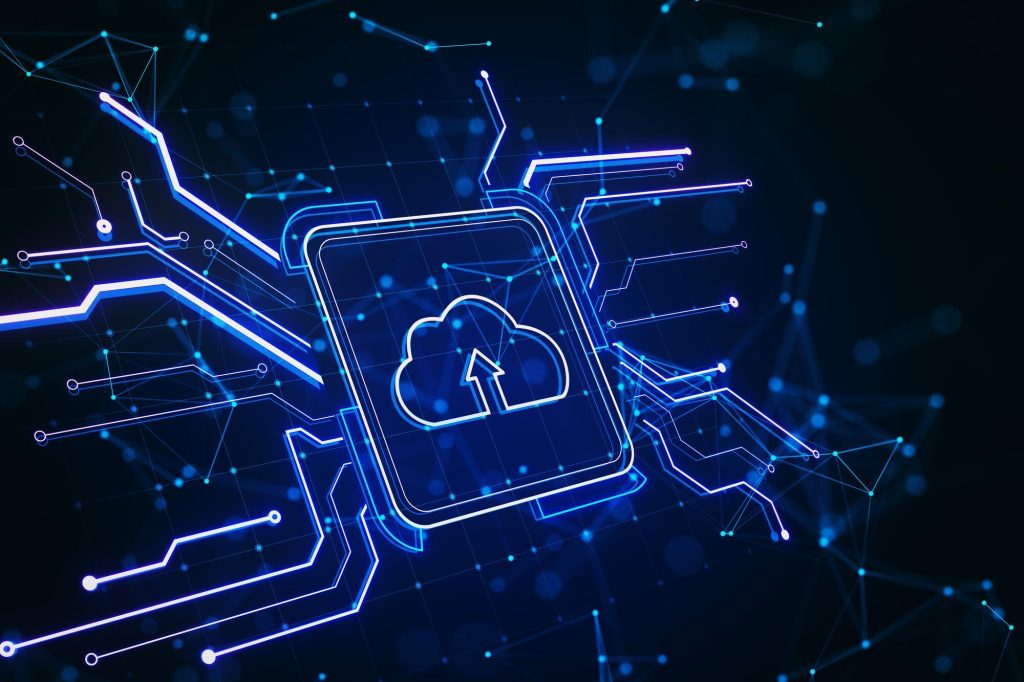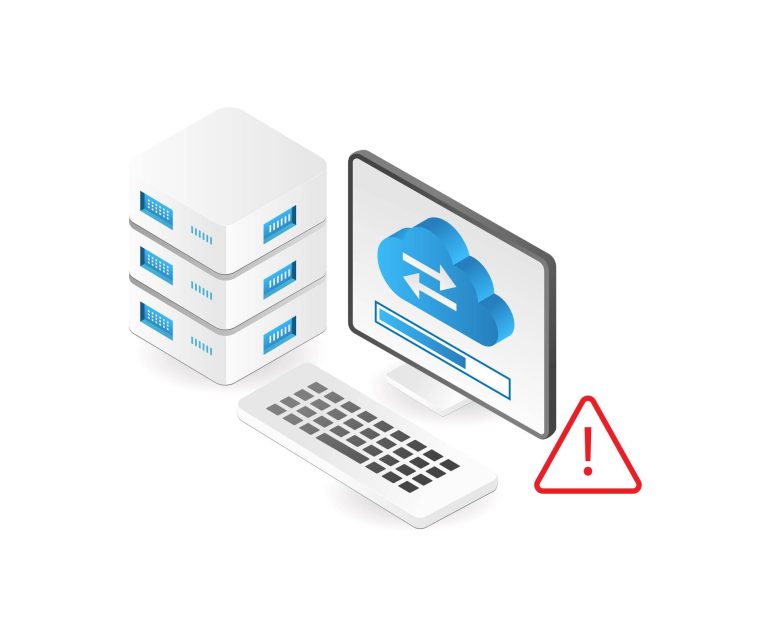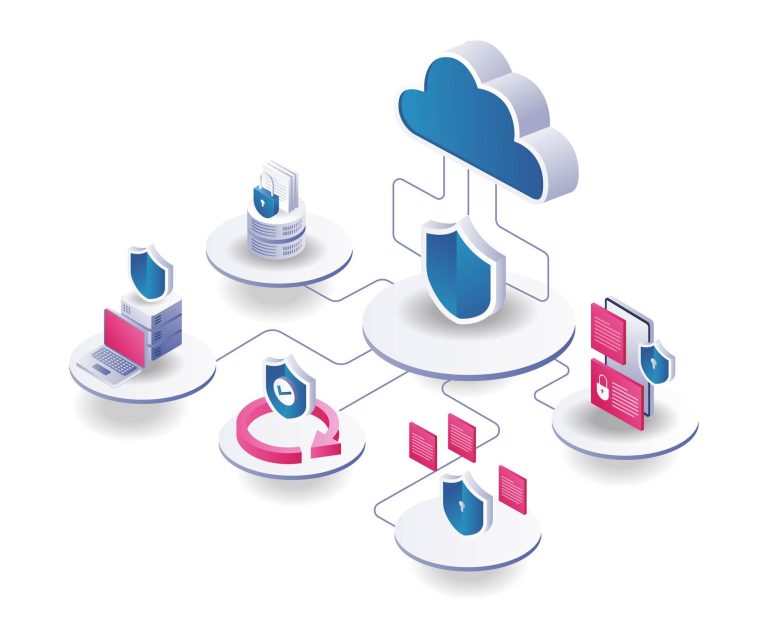Table of Contents
Cloud security is now a business priority, not just a technical task. As the cloud powers everything from small business tools to global supply chains, it offers unmatched flexibility and scalability—but also exposes businesses to new risks. Cloud security involves protecting data, applications, and systems running on shared, vendor-managed infrastructure, along with the networks that connect them.
With public cloud spending projected to surpass half a trillion dollars annually and growing at a 20% year-over-year rate, more organizations are shifting their mission-critical workloads to the cloud. But this rapid adoption increases the risk of data breaches, insider threats, and the complexity of securing hybrid and multi-cloud environments. For forward-looking companies, cloud security is no longer just a safeguard; it’s a strategic enabler.

Operational Pressures and Compliance Challenges in the Cloud
Pressure on Lean IT and Security Teams
Cloud environments evolve fast, and IT and security teams often struggle to keep up. With limited headcount and growing responsibilities, maintaining strong security while supporting rapid development is a constant challenge.
Without automation or dedicated resources, it’s difficult to strike the right balance. Adopting best practices and modern tools can help lean teams stay secure without slowing innovation.
Rising Regulatory Stakes
As regulatory scrutiny intensifies, frameworks such as GDPR, HIPAA, and the EU’s NIS2 Directive impose stringent penalties, up to 4% of global revenue, for data mishandling. Compliance audits play a crucial role in ensuring that security practices align with legal and industry standards, driving continuous improvement and mitigating risk. Forward-thinking organizations increasingly view compliance not as a barrier, but as a strategic advantage that builds trust and operational resilience.
Remote Work Turns Identity into the New Perimeter
Work‑from‑anywhere accelerates risk. Remote workers must use unmanaged devices to log in to public networks, making identity security the new perimeter.
The Shared Responsibility Model
Every major provider, AWS, Microsoft Azure, Google Cloud, Alibaba Cloud, follows a similar paradigm: you secure ‘in’ the cloud, the provider secures ‘of’ the cloud.
| Layer | Cloud Provider Responsibility | Customer Responsibility |
|---|---|---|
| Physical facilities, power, HVAC | Yes | No |
| Hypervisor, storage disks | Yes | No |
| Virtual machines, containers | No | Yes – Patching, hardening |
| Identity & Access Management (IAM) | Yes – Core service availability | Yes – Policies, least-privilege roles |
| Data & applications | No | Yes – Encryption, backup, DRM |
| Compliance mapping (e.g., SOC 2) | Yes – Controls for infrastructure | Yes – Controls for workloads |
Why it matters for decision makers: Misunderstanding this boundary can turn a CFO’s forecast upside down. A single misdefined customer obligation, such as neglecting to encrypt sensitive data, can result in millions of dollars in unplanned mitigation costs and regulatory fines.
Real World Divide
- AWS RDS encryption: AWS offers KMS keys, but customers must enable encryption, securely manage encryption keys, and periodically rotate the keys.
- Azure RBAC: Microsoft enforces the engine, but security engineers must grant granular access permissions and audit changes accordingly.
- Google Cloud Logging: Under GCP, Google collects logs, but customers must redirect them to SIEM solutions and establish a retention policy.
Common Misconceptions About Cloud and SaaS Security
Many organizations still hold outdated or oversimplified beliefs about cloud and SaaS security. These misconceptions often lead to avoidable risks, misconfigurations, and compliance failures.
- We use SaaS, so we’re covered. Using a SaaS provider doesn’t mean your entire environment is secure. While the provider handles the infrastructure, you are responsible for user authentication, role-based access, data loss prevention, and security configuration. Many breaches occur due to customer-side oversights, rather than failures on the part of the provider.
- Default settings are secure: SaaS tools often ship with open or permissive configurations to facilitate easier onboarding. Unless your team actively tightens these settings, your environment could remain exposed long after going live.
- Compliance equals security: Compliance audits, such as SOC 2 or ISO 27001, demonstrate that specific controls were met at a particular point in time. However, they don’t guarantee continuous protection, especially in fast-changing cloud environments. Security must be ongoing, not just an annual checkbox.
- Responsibility is obvious: Security ownership across cloud services isn’t always intuitive. Without clearly defined roles, teams often assume someone else is managing a critical control. This lack of clarity can delay response and increase impact during incidents. Assigning and documenting responsibilities helps eliminate confusion.

Cloud Vulnerabilities: Where Risks Emerge
The entire system of cloud stacks consists of thousands of components that move around, including Terraform pipelines, Kubernetes clusters, serverless functions, and CI/CD secrets. These cloud resources are the digital assets that require robust protection. In cloud environments, cloud security issues and risks are key concerns, as each stratum introduces potential distractions and unique vulnerabilities.
Storage exposure
Incorrectly configured buckets, snapshots, and data instances, especially in cloud storage, may spill terabytes of information within a few minutes.
Misconfigured storage can lead to data leaks, exposing sensitive information to unauthorized access.
Gartner predicts that by 2025, 99% of cloud failures will be caused by customer misconfigurations.
Insecure APIs
APIs power the way payments are handled, as well as IoT telemetry. Lack of strong authentication and throttling can lead to endpoint enumeration, malicious requests, unauthorized data access, or pretextual scraping of confidential information.
Credential mismanagement
Long‑lived keys in GitHub repositories can be one of the primary entry points. The blast radius is reduced through cloud identity and access management (CIAM) hygiene, including the use of short-lived tokens and automatic token rotation.
Insider risks and shadow IT
Developers spinning up unmonitored instances on personal credit cards bypass corporate guardrails. Departing employees sometimes retain access to systems months after their exit interviews.
Compliance drift
Dynamic scaling means new resources appear hourly. Lack of encryption on one, and only one, of the databases that hold unencrypted cardholder information could increase the scope of PCI DSS compliance alone, as data security is a compliance requirement and all sensitive data must be kept encrypted to meet these standards.
Determining and putting a value on the risk
Suppose there’s any security flaw that hasn’t been fixed. In that case, it puts the business’s critical data at greater risk, which can lead to a loss of customer confidence, compounded by operational exposure, and ultimately lead to higher costs for cyber insurance.
How Attackers Exploit Cloud Weaknesses
Threat actors increasingly specialize in cloud‑native kill chains, using automation to locate the “low‑hanging fruit” at scale. As attackers exploit vulnerabilities, organizations face significant security threats and cloud security incidents, which can lead to data breaches, service disruptions, and financial losses.
- Misconfigured identity access: In June 2025, a major breach exploited weak IAM policies and outdated OAuth tokens. The attackers bypassed access controls and infiltrated sensitive workloads—highlighting the risks of poor identity governance.
- Exposed storage and APIs: Open S3 buckets and insecure endpoints are frequent entry points. In one case, customer support recordings containing PII were indexed by search engines for months, exposing the organization to public backlash and potential regulatory scrutiny.
- Credential leaks: A single GitLab token exposed in a public repo enabled attackers to access production containers and install crypto-mining scripts spiking compute bills by 40% before detection.
- Lateral movement via metadata services: By targeting the 169.254.169.254 metadata endpoint, attackers can extract instance credentials and pivot deeper into your infrastructure.
- Supply chain compromise: Malicious packages uploaded to public registries (via dependency confusion) establish backdoors after deployment, allowing attackers to issue commands from external servers.
These aren’t just technical issues; they result in tangible business impact:
- Financial losses: Breach-related downtime can cost over RM26,000 per minute (based on an average of USD 5,600/min).
- Regulatory penalties: Under the GDPR, fines can reach up to RM105 million or 4% of the company’s global annual turnover, whichever is higher.
- Brand damage: On average, companies experience a 15% decline in stock performance compared to the NASDAQ six months after the incident, often due to erosion of customer trust.
Cloud security risk is no longer just IT’s problem; it’s a business-wide issue that demands board-level visibility and action.

Defensive Strategies for Securing Cloud Environments
Traditional “castle‑and‑moat” models crumble in the cloud’s borderless world. Proactive security combines automation, context, and continuous validation to enhance security.
- Zero Trust architecture: Verify every request. Apply multifactor authentication (MFA), device posture checks, and conditional access policies to all workloads.
- Security-as-code: Including guardrails in Terraform, CloudFormation, or Pulumi templates ensures every new workload is automatically encrypted, tagged, and has least-privileged defaults. One mid-market retailer reduced launch timelines from 12 to 8 weeks by automating these checks in their CI/CD pipeline. Enforce building breakage if policies are not complied with.
- Microsegmentation: Software-defined networking (SDN) or service mesh (Istio, Linkerd) can be used to microsegment workloads, allowing only pod-level granularity of workload lateral movement. Think of it as giving each application its locked room, rather than letting all workloads roam the house.
- Automated patching and immutability: Replace servers rather than patch them. Use golden container images scanned by registries (Trivy, Clair) before deployment.
- SOAR and Playbooks (automated security responses that help teams react faster): Security Orchestration, Automation & Response triggers scripted actions—quarantine an EC2 instance, rotate keys, notify on‑call engineers—within seconds of suspicious anomalies.
Companies with more than 70 percent of repetitive security processes that are automated realize a 55% decrease in mean-time-to-respond (MTTR). In addition to the figures, this type of automation also enables security professionals to focus on strategic risk mitigation, rather than continually fighting fires.
Building Smarter Threat Detection in the Cloud
- Turning Raw Data into Early Warning Signals: Logs, telemetry, and behavioral monitoring are raw inputs that become robust early‑warning systems once they’re stitched together.
- Unified Telemetry Pipeline: A standard telemetry pipeline can store and aggregate comprehensive data from CloudTrail, VPC Flow Logs, Kubernetes audit logs, and application metrics into a single Big Data analytics lake, such as a SIEM platform like Splunk or Elastic.
- Context Aware Analytics: Machine-learning models baseline “normal” behavior (CPU spikes during batch windows) and identify unusual activity, such as unexpected data transfers to unknown IP addresses.
- Control Plane Monitoring: Governance APIs, IAM changes, policy updates tell a richer story than traffic logs alone; unauthorized role creation often precedes data theft.
- Deception and Honeypots: Planting fake credentials or beacon‑laden “canary” S3 objects alerts teams when attackers probe beyond allowed areas.
- Incident Response Readiness: Quarterly tabletop drills, automated runbooks in chat ops tools (Slack, Teams), and clear RACI charts ensure swift containment. Companies that master response capabilities spend an average of USD 2.22 million less per data breach incident.
- Business-Aligned Detection: Detection mechanisms are calibrated to business criticality, data sensitivity, and compliance scope, allowing teams to focus on incidents that matter. One high-fidelity alert that prevents an outage can protect millions of dollars in revenue during peak season.
Cloud Deployment Models: Security Considerations
| Model | Opportunity | Core Exposure | Key Security Focus |
|---|---|---|---|
| Public Cloud | Rapid scale, pay‑as‑you‑go, global reach | Increased attack surface due to multi-tenant architecture | CSPM, robust IAM, encryption & key management, DDoS protections |
| Private Cloud | Greater control, bespoke SLAs for latency or data residency | High CapEx, skilled staff needed, potential tech debt | Rigorous patching, network segmentation, insider monitoring, and hardware lifecycle management |
| Hybrid Cloud | Workload portability, regulatory flexibility | Integration gaps, inconsistent policies, and latency | Unified policy engine, secure interconnects (VPN/Direct Connect), consistent data classification |
| Multi‑Cloud | Avoid vendor lock‑in, competitive pricing, and SLA diversity | Tool sprawl, skills shortage, visibility silos | Centralized visibility, cross‑platform IAM federation, standardized logging schema, cloud governance |
Cloud Security Solutions
Cloud adoption continues to accelerate, and so do the threats that follow. Security failures today don’t just affect IT; they disrupt revenue, damage reputation, and invite regulatory penalties. The goal isn’t retreat, it’s resilience. Effective security solutions must address the unique challenges of each cloud service and the broader cloud services landscape, ensuring organizations can effectively manage risks and maintain compliance.
Spectrum Edge helps organizations enhance their security posture across cloud, hybrid, and multi-cloud environments. From architecture assessments and Zero Trust implementation to Fortinet-powered solutions like FortiCloud SaaS, we deliver faster threat detection, simplified governance, and stronger alignment with business priorities. Cloud security necessitates robust policies, technologies, and access controls to safeguard data and ensure compliance.
Our approach equips teams to operate confidently without compromising agility, compliance, or visibility.